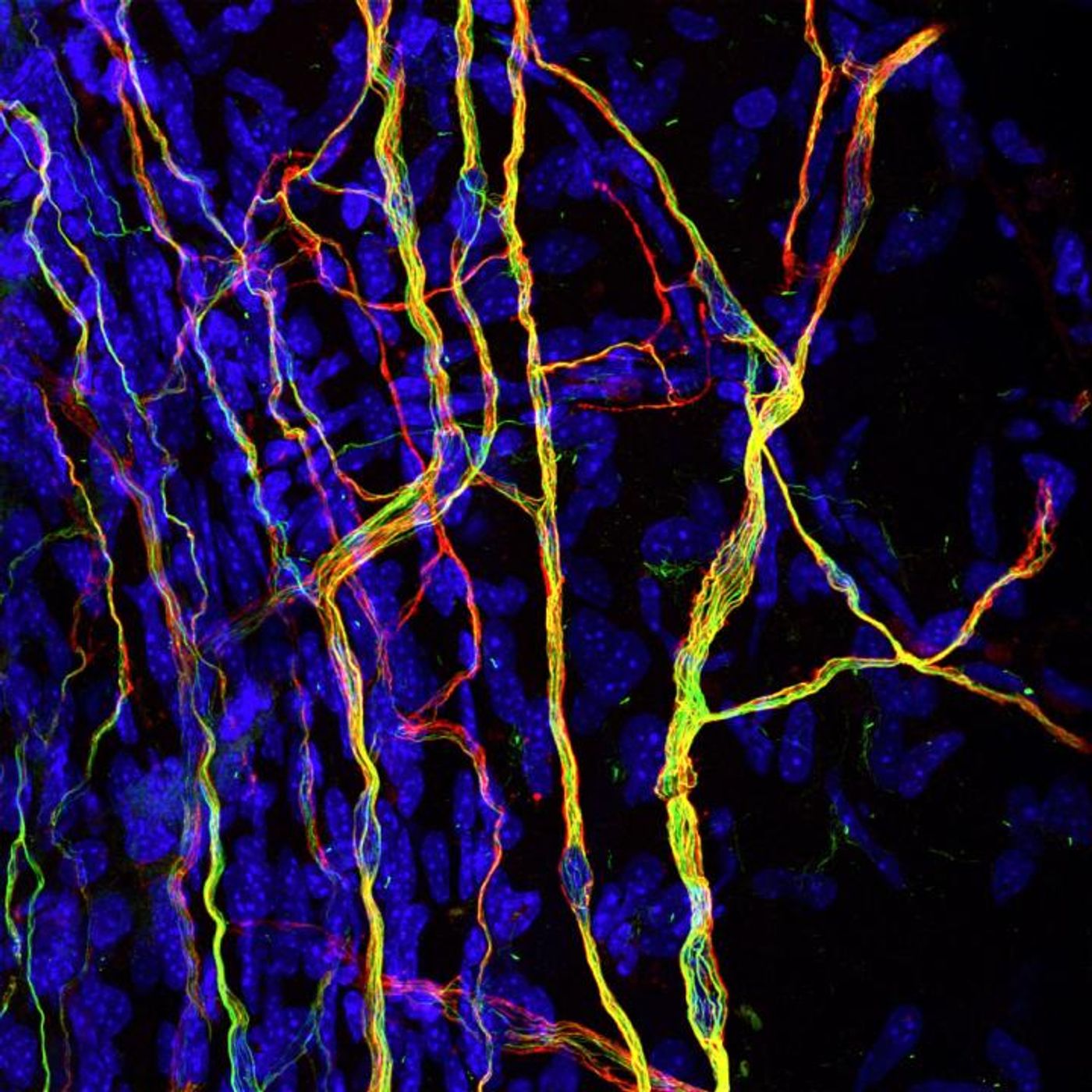Researchers Find Potential new Treatment for Pain
Many people suffer from chronic pain, and that can cause extreme sensitivity; the slightest light touch can cause some people severe discomfort. Researchers from the European Molecular Biology Laboratory (EMBL) and the Werner Reichardt Centre for Integrative Neuroscience (CIN) at the University of Tübingen have possibly found a new way to make painkillers for that type of pain. Reporting in eLife, they have learned more about how stiffness in nerve cells can affect sensitivity to pain and to touch.
Receptors on nerve cells in the skin can take in a variety of sensory inputs, and transmit that information to the brain, where it is processed as a sensation. The receptors in the skin can detect changes in the shape of the membrane surrounding nerve cells and respond to that information. The EMBL investigators determined that a specific molecular affects the sensitivity of a mouse to pain and touch.
"Being able to stop this mechanical pain could be very powerful, and it's something that current drugs are not very good at doing," said Paul Heppenstall, leader of the work at EMBL.
The researchers used a mouse model that lacked the Atat1 molecule. It was then found that the altered mice had nerve cells that were stiffer; the mice were also more sensitive to mechanical pain and light touch. Collaborating researchers Laura Andolfi at Istituto Officina dei Materiali-CNR, in Trieste, and Jing Hu's lab at CIN observed these effects whether Atat1 had been removed from only sensory neurons, or the entire mouse.
Atat1 is ubiquitous; it’s in all cells, where it modifies microtubules. Microtubules act as a scaffold for cells as well as a transport network. The researchers were intrigued to find that other sense in mice did not appear to be impacted by the loss of the molecule.
"It could be that the molecule also affects the stiffness of nerves involved in other senses, but because stiffness is not important for detecting smells or tastes, for example, changes in cell stiffness might not have a detectable effect on those senses," said Shane Morley, a researcher at EMBL.
The investigators learned that the microtubule network of nerve cells responsible for detecting touch differ from the microtubule network of other cells. The microtubules form a ring just below the membrane in the sensory cels, but don’t in other cell types. The researchers suggest that ring is able to affect the flexibility of the membrane and thus, sensitivity to touch.
While this work was performed in mice, there are many similarities between mice and humans when it comes to sensing touch, so these results may very well apply to humans. Even though cell stiffness is probably not the root cause of chronic pain for most people, modulating that stiffness could be a new therapy.
"We're now looking for small molecules that interfere with this fine-tuning of cell stiffness, and which might one day be used to make painkillers specifically to treat this mechanical pain," said Heppenstall. "This is the first step in our sense of touch, so if we can stop the signal there, then we have a good chance of stopping everything which is downstream. And because only these touch-sensing nerve cells would be affected, there's hope that such a drug might not have many unwanted side-effects."
Sources: AAAS/Eurekalert! via EMBL, eLife











